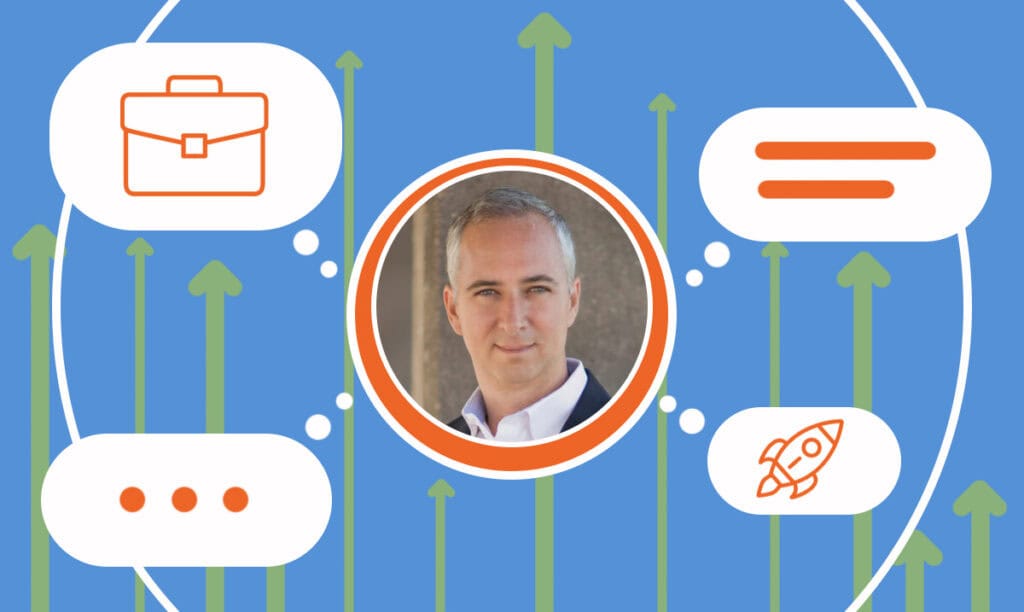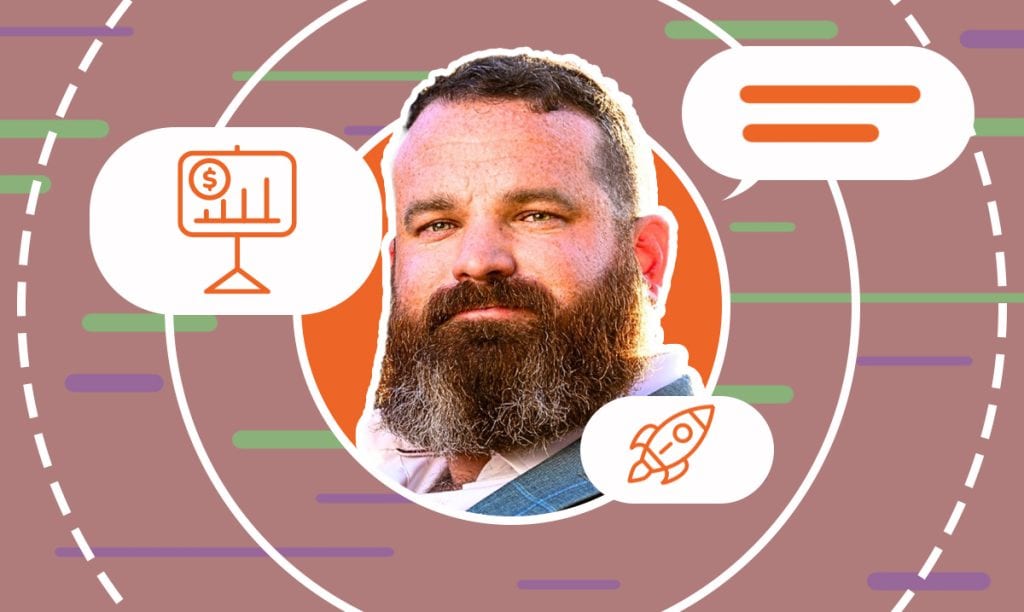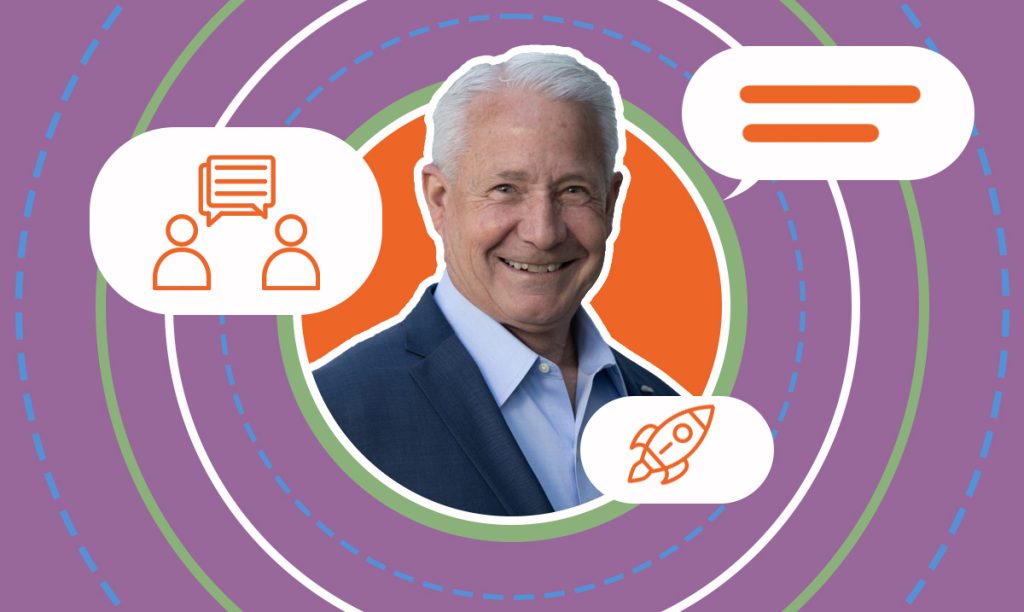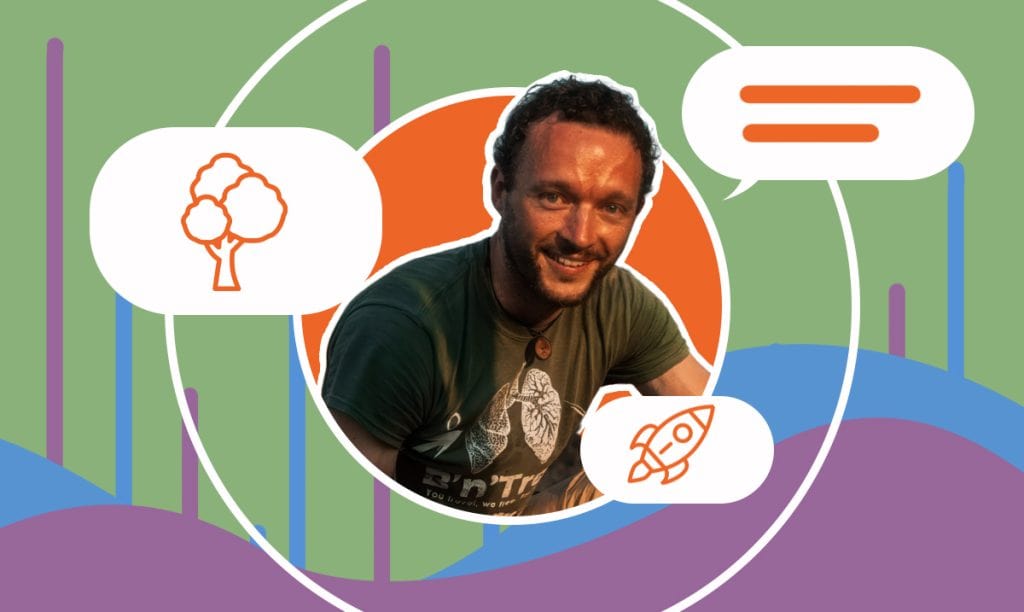In this interview, David Pere, the founder of From Military to Millionaire, shares his inspiring journey from the Marine Corps to financial freedomt ...
How the COO Alliance Shapes Top Executives
Written by: Carolyn Young
Carolyn Young is a business writer who focuses on entrepreneurial concepts and the business formation. She has over 25 years of experience in business roles, and has authored several entrepreneurship textbooks.
Published on May 21, 2024

We bring you an insightful conversation with Cameron Herold, the founder of COO Alliance and the host of the Second In Command podcast. Cameron has been at the forefront of shaping the role of chief operating officers (COOs) and their relationships with their CEOs.
In our discussion, we’ll delve into the genesis of the COO Alliance, uncover the strategies for measuring the success of programs, learn how technological advancements have transformed the role of COOs, and much more.
So, join us as we embark on a journey through the intricate dynamics of business leadership and operational excellence!
Origins and Objectives of COO Alliance
SBS – What inspired the creation of the COO Alliance, and what gaps in the market did you aim to fill with it?
Cameron – The big thing I noticed was there were a lot of groups and mastermind communities for entrepreneurs and CEOs, but there was nothing for their second in command (COO). It’s like a traditional family with a husband and wife. If there were lots of groups for women, but there was nowhere for the men to go to grow their skills, communication, confidence, or network, we’re only helping one-half of the family, and to raise a really good family, you want to help the wife and the husband. To grow an amazing company, you need to develop the skills, confidence, and connections of the CEO, but also of their COO. We started the COO Alliance for that reason.
Measuring Program Success
SBS – How do you measure the success of your programs?
Cameron – We have three core measurements that we look at to track the success of the COO Alliance.
The first is the net promoter score. At every online monthly event and our two annual in-person events, we ask all attendees, on a scale of one to ten, how enthusiastically they would recommend the COO Alliance. We take the percentage of people who give us a nine or a ten (those are the promoters). We subtract the percentage of people who give us a one through six (the detractors) and end up somewhere between negative 100% and positive 100%. Our goal is to always end up at a percentage greater than 70%. According to the net promoter score group, you’re considered world-class if you’re greater than 50%, but we always want to be 70% or greater. We had a 92% positive net promoter score at our event last month.
The second thing that we track is our renewal percentage. We look at the percentage of our members who renew every year.
The third measurement is our referrals and our efforts to activate our members and their CEOs, who are typically paying the bills, to activate more referrals.
Key COO Qualities
SBS – What are some key qualities that you believe every COO should have?
Cameron – One of the key qualities of the COO is their communication skills and the ability to have hard conversations with the CEO. The CEO is usually starving for someone to tell them the truth because there are so many people who always want to be nice and polite, but they need someone to tell them something’s going wrong.
Number two is the ability to delegate and grow people. I recently did a video on Instagram that the job of the COO is not to do work but to delegate all of the work to people and grow their skills and confidence so they can do more. They can work on delegation, coaching, one-on-one coaching, and time management skills.
Number three is the ability to collaborate and make sure that all different business areas are collaborating because they’re the ones that have to break down the silos and the turf wars. You need marketing, working with operations, finance, IT, customers, etc. They have to be good at getting everybody to work together instead of just working in their silos, which is very different from most business leaders that are typically very focused on the silo that they run.
There’s also the confidence that the more you delegate, you’ll still be busy. People are often worried that if they delegate everything they do, they will be out of a job. No, you’ll end up having more time to grow people, build, plan, and delegate. It becomes a snowball that keeps getting bigger, but that’s a confidence loop that the COO or second in command needs to get good at.
I started a course a couple of years ago called Invest in Your Leaders, and it contains many soft leadership skills. People often get very good at running their functional area, or they get good at running their company. Still, they don’t get training in a lot of the soft skills until they’re in a much bigger organization (a company that might have a learning department or a really big HR department). Usually, if you’re in a company of 500 or more people, they tend to have management training programs. However, for smaller and mid-sized companies, there’s no real management training, so they need to go outside for that. That was the reason I started this course.
Evolution of the COO Role
SBS – How do you think the role of COOs changed over the years, especially with the advance of technology?
Cameron – There are a couple of things that have really changed. One is the ability and almost the necessity to hire people globally. Only in the last five or seven years (especially during the pandemic) did we really start to outsource and offshore so many functions. I think the COO needs to be very, very good at helping the team and the company hire people based globally.
Number two is the actual leverage of technology. We’ve been leveraging technology since 1997/98 and the rise of the first dot era. We’ve been using a lot of the tech stack for 22 years. Adapting to AI hasn’t been that hard for anybody who has tech skills or is a really good operational leader.
That’s the biggest thing that separates companies’ ability to scale quickly because it allows them to have more gross margins and deploy more people. If you hire all these people but can’t lead and manage them or get results because they’re globally dispersed, then you’re really dead in the water.
Impact of COVID-19
SBS – Do you think that that changed after COVID?
Cameron – I think COVID made it faster. Great companies were already starting to hire remotely. It was popularized in Tim Ferriss’s book, The 4-Hour Workweek, which came out in 2007, and the ability to hire via Elance-oDesk, and later via Hired, Fiverr, etc. Now, there are outsourcing and outplacement firms all over the world that can hire people for you. That started again probably seven or eight years ago, but COVID opened it up because now if a company is based in Kansas City, they don’t have to hire people based in Kansas City. They could hire in Miami, Seattle, or even Bulgaria. All of a sudden, they started hiring more people globally post-pandemic. Now it’s just full force where everyone’s doing it.
Here’s a funny thing. I had a company I was coaching a couple of years ago during the pandemic. They were based in Indianapolis in the United States, and they lost one of their higher-level managers to a company based in Luxembourg. The CEO asked, “Where is Luxembourg?” I’ve been to Luxembourg, so I had to explain to him. He wondered how a company based in Luxembourg could hire someone based in Ohio. I said, “If you’re hiring people based in Europe, people based in Europe are going to hire here.” The world is now competing for talent on a global landscape, so COOs need to be very good at it.
Adaptability in Training
SBS – How do you ensure the training is adaptable and relevant to different industries and company sizes?
Cameron – The first thing we do is listen to our members, finding out what they’re looking to learn and where they’re looking to improve.
The second is ensuring that the content we deliver is industry-agnostic. We never teach someone how to run a manufacturing company. We’re talking more about operations, execution, people, scale, and numbers — stuff that works across industries.
The third thing is getting members from different industries, ages, and countries. Currently, this is how our membership makeup for the COO Alliance looks:
- About 38% of our members are women
- Our youngest member is 21, and our oldest is 62
- 80% of our members are from the US, 10% are from Canada, and 10% are from 15 other countries
We cross lots of industries. We have the blue-collar manufacturing company, the franchisor, the pure-play online digital marketing agency, etc. I’ve also been in so many of these mastermind communities for the entrepreneur that I look for thought leaders who will work across many industries, too. We don’t try to go after just one vertical.

Effective Leadership Strategies
SBS – What strategies do you believe are important for effective leadership?
Cameron – I have every leader go through three core strategies or mindsets. Number one: The leader’s core job is to grow people. Our job is to grow their skills, confidence, and connections so that anyone who works for us can do more.
Number two: Our job is to get results through people rather than to do work. If we show up with the mindset that our job is to get results through these people and grow their skills, confidence, and connections, it reframes what we’re doing on a day-to-day basis.
Number three (and possibly most important): I flip the chart upside down, so we have the CEO and the COO at the bottom supporting the VPs, who are supporting the managers, who are supporting the employees, who are supporting the customers. It’s like an inverted pyramid. I think that’s maybe less of a strategy and more of a mindset and a philosophy, and I have every leader try to show up with those three things. Instead of the typical top-down style where the CEO is delegating and telling people what to do, now it’s really about how we support and grow people. It’s a huge mindset shift.
CEO-COO Relationship Dynamics
SBS – How important is the relationship between the two most influential figures in the company (CEO and COO)? What do you think both parties can do to make this partnership even stronger and function in the best possible way?
Cameron – Firstly, we must start with the understanding that the relationship between the CEO and the COO is the most important relationship in the business. If they show up with that mindset, they will work on that relationship more than anything else. It’s very similar to how a husband and wife must show up in their family. The most important relationship in the family is the mom and dad, not the mom with the kid or the dad with the kid. It’s the mom and dad first, and if that unit is very strong, then all the other secondary relationships can be very strong.
In my book, The Second in Command, I covered a lot of the systems and tools that you can use, like following what you do in a normal relationship (having date nights, spending time away from the kids, making sure that you have good open communication and good honest trust). It’s very similar to the book that came out years ago: Men are from Mars, Women are from Venus. It’s almost like CEOs are from Mars and COOs are from Venus. They need to learn how to communicate, collaborate, and stay in sync. So, showing up with that mindset gives you a head start.
Business Operations Trends
SBS – What trends or innovations in business operations should COOs be aware of, especially in the time of AI, when many are afraid of it?
Cameron – Again, it goes back to the mindset that the only person at risk of losing their job to AI is a person who does not embrace and leverage AI. It’s almost as if a COO 25 years ago said they weren’t going to use a laptop and WiFi. Well, then, you’re out of a job. You have to leverage those technologies. You have to leverage the internet and tools like Asana or ClickUp and have a mindset that those tools are going to help you, and you shouldn’t be afraid of them. That’s number one.
Number two: The older the person is, the more they should strive to learn from younger people. Get someone who’s 21, 22, or 24 to show you how to be more effective in your job at leveraging AI. Spend an hour a day or a couple of hours a week learning about different AI tools, watching different AI videos, and looking at different AI prompts. Also, have all of your employees spend time learning and practicing some of these AI tools every week so they can do more and be more productive in their jobs, and then have them share with each other. But if you’re afraid of the tool, it will become a barrier to your work.
Community Building and Benefits
SBS – How does the COO Alliance foster community among its members, and what are the benefits that the community offers?
Cameron – We have two in-person events every year, so many members come together in person for two and a half days and build great relationships. One event is held in Vancouver, Canada, or Scottsdale, Arizona. The other event is held in Boston at an MIT offsite called Endicott House.
We also hold events online every month via Zoom so members can see and talk to each other online.
There’s also in-person Slack, where they can integrate and talk to each other between the events. We also set up one-on-one calls between all of our members, so we’re really working hard to build those connections.
I think the big outputs or big benefits they get are increasing their skills, confidence (where they get rid of that imposter syndrome), and connections (where they realize they don’t have to be the smartest person in the room anymore and they know lots of other smart people that they can turn to and ask for information).
Continuous Learning
SBS – How important is it for CEOs to engage in continuous learning and development?
Cameron – It’s critical. I saw a saying years ago, and it said that if the rate of change outside your business is greater than the rate of change inside your business, you’re out of business. Any leader must continue to grow. If we double the size of the company, we have to double our skills. For anyone who says they’ve been doing this for 30 years and think they don’t have to learn — well, maybe you have five years of experience six times in a row, but at some point, someone younger is going to have the technology and the AI skills and enough wisdom to kick your butt. You always need to grow.
Comments
Leave a Reply
Subscribe to Our Newsletter
and gain insider access to cutting-edge business insights and trends.
Featured Resources

How David Pere Helps Veterans Achieve Financial Freedom
Published on April 3, 2025
Read Now

Empowering Entrepreneurs with a Consultative Banking Model
Published on January 23, 2025
When it comes to business banking, a one-size-fits-all approach doesn’t cut it — just ask Endeavor Bank. Since its founding in 2017, EndeavorBan ...
Read Now

How Click A Tree Makes Sustainability Simple for Businesses
Published on January 20, 2025
In this interview, Chris Kaiser, the founder and CEO of Click A Tree, shares his journey of creating a company dedicated to making sustainabilityacc ...
Read Now
Love this – thx TONS for covering me and the COO Alliance.